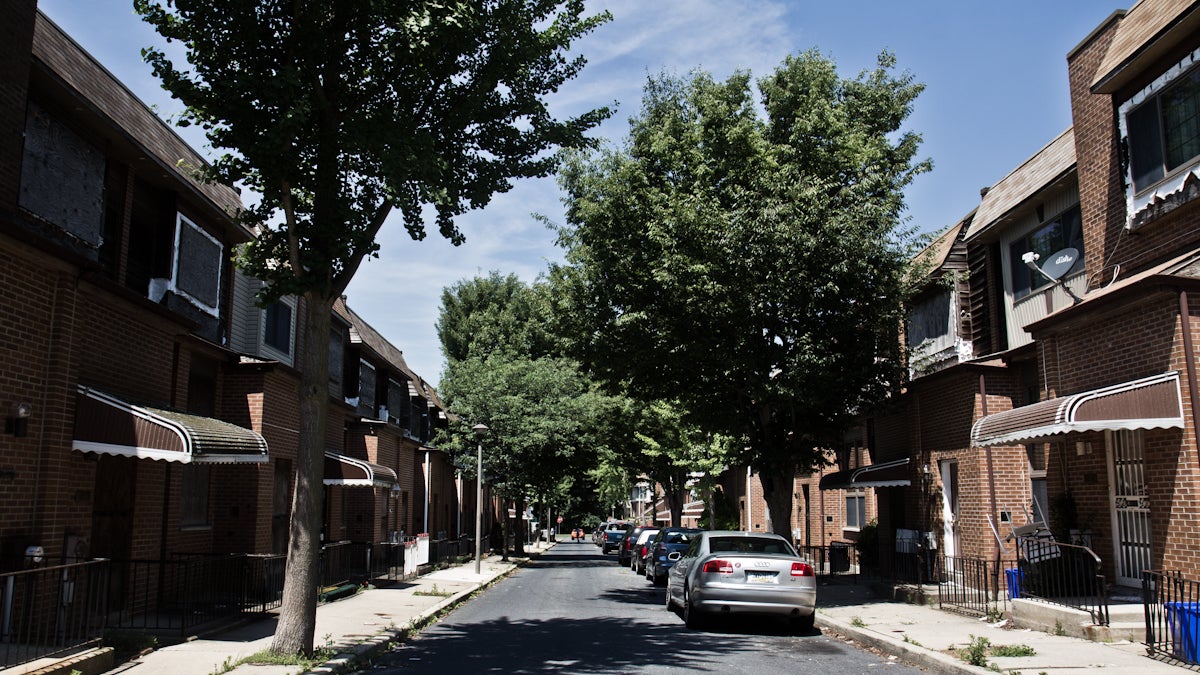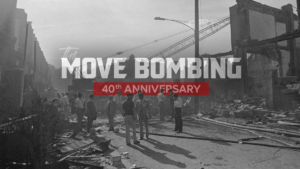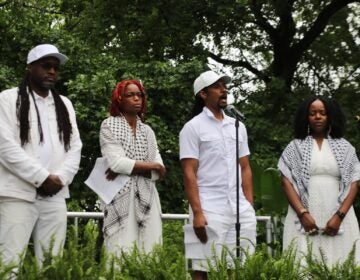Site for marker memorializing MOVE tragedy still not pinned down
Listen 3:20
The 6200 block of Osage Avenue was the site of a 1985 bombing in Philadelphia. The final location of a marker remembering the MOVE bombing is not yet known. (Kimberly Paynter/WHYY)
At a Saturday afternoon ceremony in West Philadelphia, officials will unveil a state historical marker detailing the 1985 MOVE bombing, one of the city’s most infamous days.
But the event will be without one key ingredient: a permanent place to plant the marker.
An ongoing debate between city officials and a history class at a private school in the neighborhood has stalled selection of an exact installation site.
Fifth- and sixth-graders at the Jubilee School are behind the marker. After researching the MOVE bombing — and with the help of their teacher, Karen Falcon — they applied and got approval for a state marker to commemorate the tragedy that killed 11 people and destroyed dozens of nearby homes.
On May 13, 1985, police arrived on the 6200 block of Osage Avenue to enforce the eviction of members of the radical group MOVE.
It didn’t go smoothly.
The hours-long confrontation featured gunfire early on and ended with the city dropping explosives on the roof of the MOVE compound.
Originally, the Jubilee students wanted to put the marker in front of 6221 Osage Ave., where the MOVE house once stood. A conversation with a local community activist shifted focus to the intersection of Osage and Cobbs Creek Parkway, a higher traffic location.
“The thinking was it might be hard for the residents on that block to have to face it every day. And to face whatever people would come to see it,” said Falcon.
A disappointing delay
Saturday’s ceremony will unfold along Cobbs Creek Parkway, but a phone call Falcon got last week means the marker will only be placed in a stand instead of the sidewalk. It’s unclear when that will change.
The call was from City Councilwoman Jannie Blackwell’s office, whose district includes the MOVE house.
“What was said was that it was a sensitive topic, and neighbors weren’t comfortable with having it,” Falcon said. “I didn’t know what to think because the students went up and down that block a number of times in the freezing cold and rain, knocking on doors and getting people to sign petitions.”
Save for a couple rejections, Falcon said, the majority of residents supported the marker.
Blackwell’s chief of staff, Martin Cabry, described the call with Falcon a bit differently.
“I called her, and she said she thought everything was done and everything was ready to go and now nothing is done,” he said. “I told her I honestly didn’t know anything about it, and I’d need some time — a day or two — to find out what’s going on.
“And I did research it and things hadn’t been done.”
Most importantly, no one had requested the permit required by the city to install the marker in the ground.
While it’s still unclear where the marker will end up, Cobbs Creek Parkway doesn’t seem likely.
“We raised the point that having the marker on the park side is not historically accurate, and we’re reaching out to the parties involved to get more details of their request,” said Paul Chrystie, deputy director of communications for the city’s department of planning and development.
Blackwell said a neighbor on Osage Avenue is open to having the marker in front of or on the side of her home.
Cabry said a final location should be settled on in the next two or three weeks.
For Falcon, the delay is disappointing and also a bit disturbing. It seems like another example of the city not wanting to face what happened more than three decades ago, she said.
“It felt to us, the students and me, that the marker was a way to bring some kind of healing. To say, ‘OK, this happened, it never should have happened.’
“As long as you bury history, it doesn’t get healed,” said Falcon.
The history teacher said she doesn’t feel strongly about where the marker goes. She just wants to see it erected. Permanently. So the story of the MOVE bombing is never forgotten.
WHYY is your source for fact-based, in-depth journalism and information. As a nonprofit organization, we rely on financial support from readers like you. Please give today.






